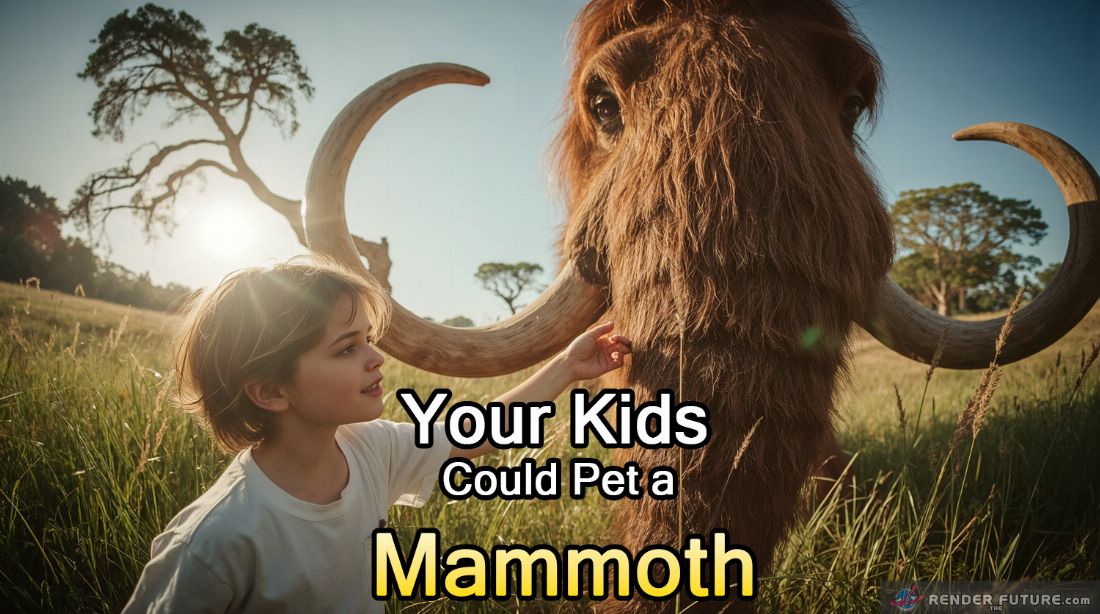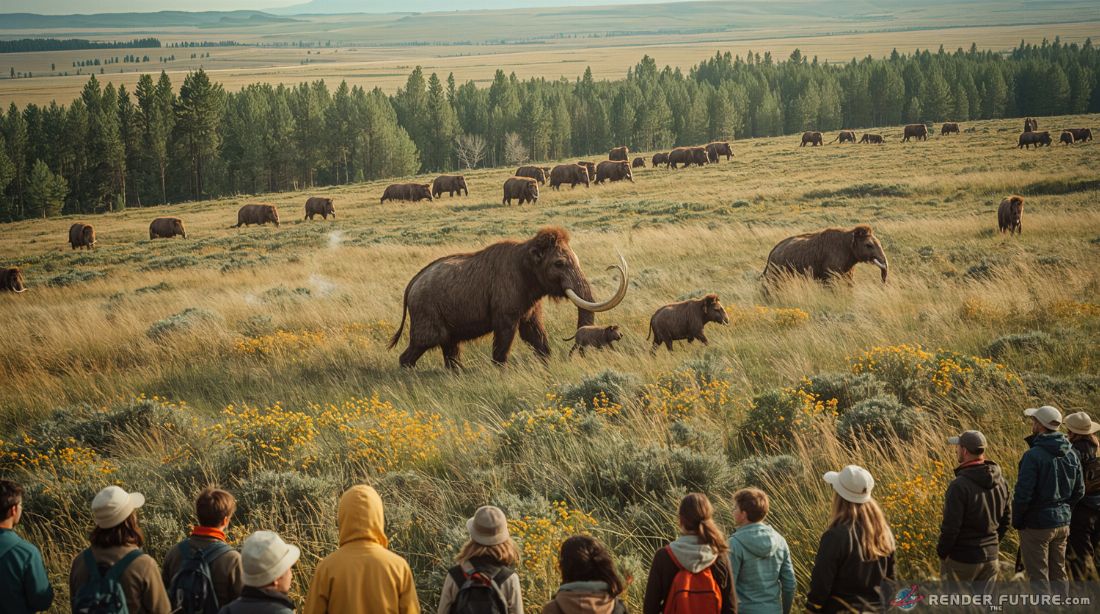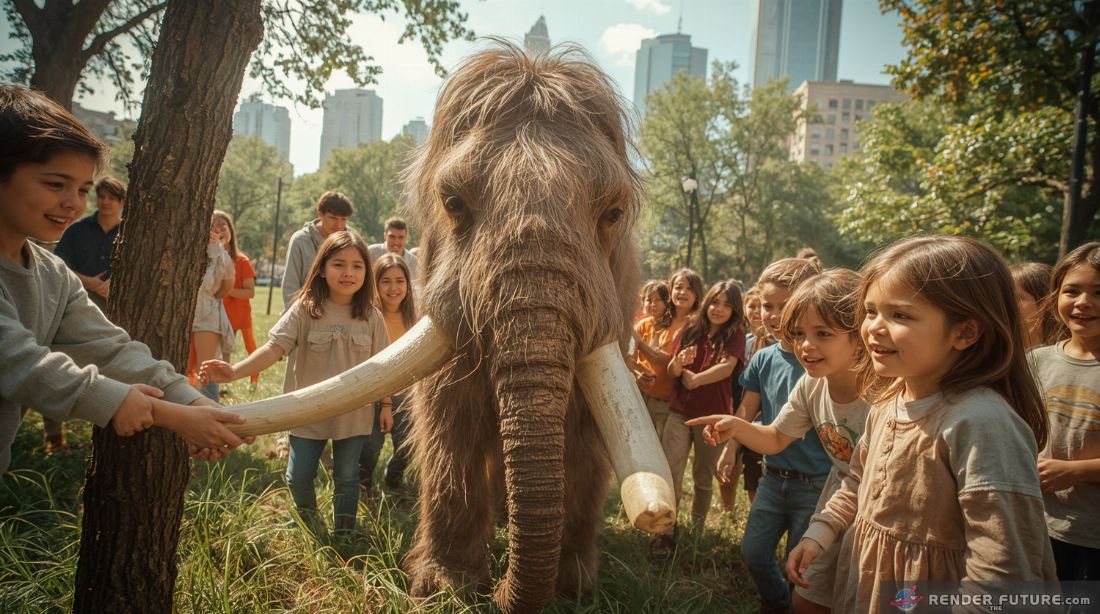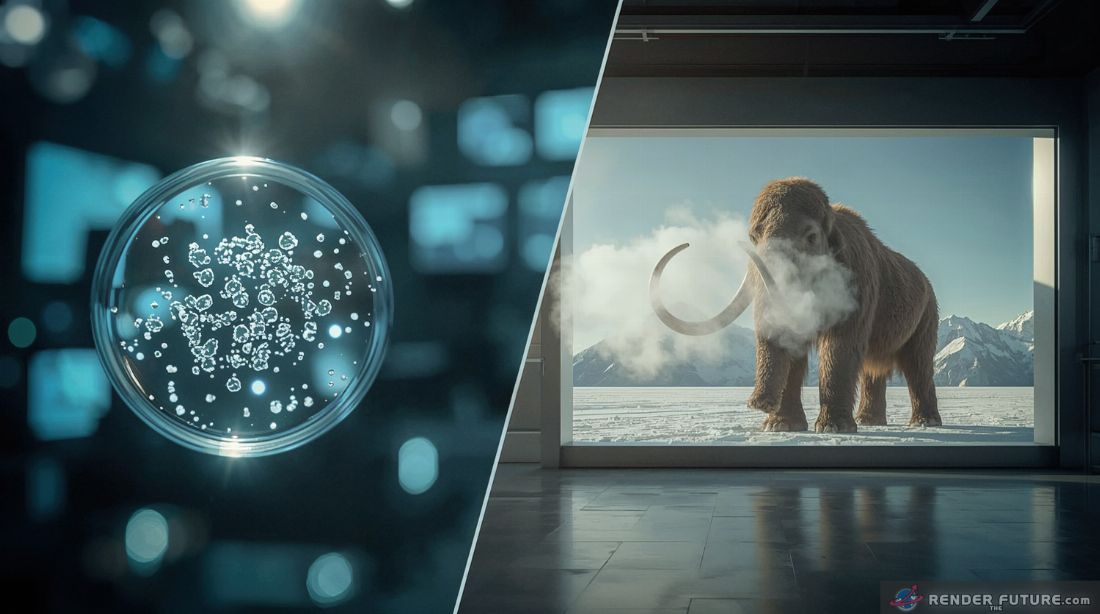Your Kids Could Pet a Mammoth
Science Is Bringing Them Back
De-Extinction Is Here
Scientists are using CRISPR gene-editing to resurrect species we drove to extinction – starting with the woolly mammoth.
By splicing mammoth DNA into Asian elephant cells, researchers aim to birth a hybrid “mammophant” by 2028. Next up? The dodo, Tasmanian tiger, and maybe even Neanderthals (yes, really).
Why This Matters:
- Restore ecosystems (mammoths could revive Arctic grasslands)
- Reverse human-caused extinction (we broke it, we fix it?)
- Tourism gold (imagine safari tours with Ice Age beasts)
The Ethical Storm:
Critics call it “playing God” – what if revived species become invasive? Or suffer in modern climates? And who gets to decide which species return? (Spoiler: Probably not the dodo.)
Your take:
🐘 Like if you’d visit a mammoth park
⚠️ Comment: Is de-extinction genius or dangerous?

The Resurrection Paradox: Are We Ready to Play Mother Nature?
Let’s cut to the chase: We’re standing at the brink of the ultimate scientific power trip. After millennia of driving species to extinction, we’re now reverse-engineering their DNA like some Jurassic Park fever dream – except this time, it’s real.
The woolly mammoth is just the opening act. But here’s the kicker: This isn’t about nostalgia for Ice Age megafauna. It’s about confronting the uncomfortable truth that we’re not just capable of fixing past mistakes – we’re arrogant enough to try. The real question? Whether we’ll screw it up all over again.
The Arctic’s Unlikely Climate Heroes
Mammoths as climate warriors? Sounds like a Marvel plot, but the science checks out. These shaggy engineers once maintained Arctic grasslands by trampling snow (insulating permafrost) and fertilizing soil with their dung. Now, their CRISPR-resurrected cousins could literally step on climate change.
Irony alert: The same species hunted to extinction by early humans might now save us from ourselves. But let’s not pat our backs yet – this isn’t redemption. It’s a Hail Mary pass with 40,000-year-old DNA.
The Theme Park Elephant in the Room
Yes, “Pleistocene Park” is already a thing in Siberia, and yes, tourists will flock to see mammoths. But turning de-extinction into a spectacle raises dystopian questions: Will these animals be conservation tools or Instagram props? And what happens when some billionaire decides a T. rex would really “spice up” their private island? The line between rewilding and ego-driven genetic capitalism is thinner than an Ice Age hare’s fur.
The Neanderthal Question (Because We Had to Go There)
Colossal Biosciences swears humans aren’t on the de-extinction menu – for now. But let’s be real: If we can revive mammoths, Neanderthals are technically possible. Cue the ethical firestorm. Would they be equals or exhibits? Test subjects or citizens?
Let’s not kid ourselves – resurrecting Neanderthals isn’t a matter of if but when. And when that day comes, humanity will face its most uncomfortable mirror yet: a species we outcompeted, interbred with, and ultimately replaced. Would they be peers or curiosities? Protected persons or research subjects?
The irony is delicious – we’re debating the ethics of recreating a cousin we likely drove to extinction while still struggling to treat living humans equally. Maybe before we play Prometheus with Neanderthal DNA, we should prove we’ve evolved beyond our own brutal history. Otherwise, what’s the point?
This isn’t sci-fi navel-gazing; it’s a trial run for how we’ll handle any intelligence we engineer or resurrect. Pro tip: Maybe don’t repeat the whole “colonialism” thing this time.
The Provocative Upshot: Extinction Is No Longer Forever
Here’s the mind-bender: De-extinction flips humanity’s legacy from annihilation to second chances. But with great power comes great absurdity. Will we prioritize showstopper species over uncharismatic but critical ones (RIP, gastric-brooding frog)? Will we bother protecting habitats, or just bank DNA like a zoological NFT collection?
One thing’s certain: The future of conservation isn’t just saving what’s left – it’s rebuilding what we stole. Whether that’s hubris or hope depends entirely on what we do next.
So – genius or catastrophe?
The verdict’s in your hands.

References and Sources:
- Nature Biotechnology: “CRISPR for De-Extinction” (2025)
- Colossal Biosciences’ Mammoth Project Update (2026)
- UN Report on De-Extinction Ethics (2024)









